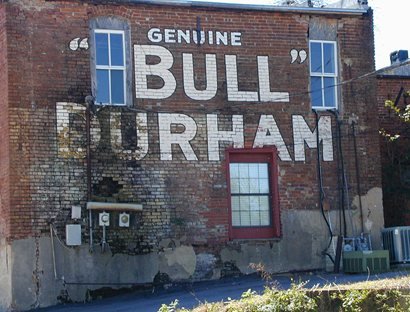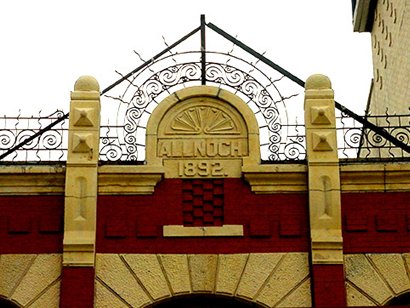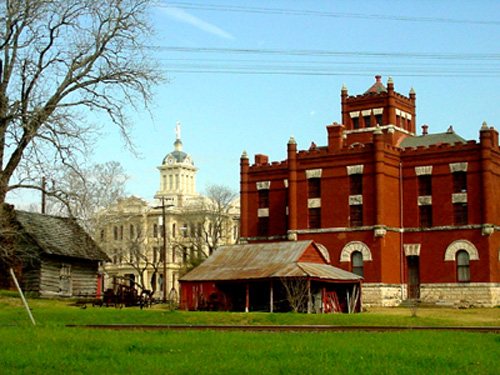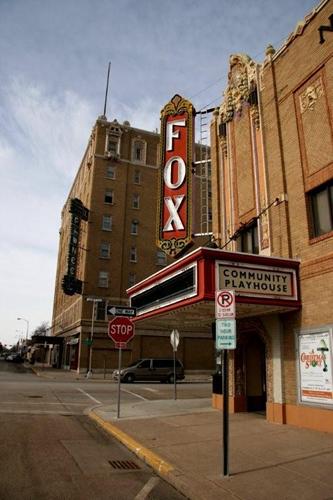|
How to Explore
a Small Town
Helpful Tips
So You Won’t Feel You've Missed Anything
By Johnny Stucco
“You can observe a lot - just by watching.” – Yogi Berra |
If
you’re doing it correctly, exploring even the smallest of towns can
take hours. There are some people who have been exploring small towns
for years and aren’t even close to finishing. There’s a name for people
like that. Archeologists.
Exploring a 19th Century American
ghost town could easily be considered archeology. Exploring a
still-breathing 20th Century town might be
considered cultural anthropology. It all seems to hinge on whether
you brought a shovel and a whisk broom or a camera.
You can think of this as a checklist if you are the type of person
who likes checklists. Actually, it is just a helpful reminder (with
numbered suggestions).
Here are Texas Escapes' 12 helpful suggestions
for visiting a small town (so you won't feel
you have missed anything).
These suggestions are for the layperson, historical tourist, curious
traveler, or anyone who enjoys the quiet and understated thrills of
small town exploration. |
1. Reconnoiter
Main Street
Start at one end of the town’s main street (which has a 50% chance
of being officially named Main Street) and drive through town getting
an overall impression. Drive until the buildings disappear and then
drive a few more blocks for good measure. By doing this you will frequently
encounter some structure or another that isn't included in downtown
proper. Perhaps it is a railroad
switching tower, brickyard, or grain
elevator. Perhaps the town had been hit by a tornado or fire and
a building or two will define the town’s former city limits.
|
|
Street Scene
in Pawhuska, Oklahoma
TE Photo February, 2005
|
2. Signage
Note the names on the street signs – especially if they are surnames.
In most cases small towns have surnamed streets while the larger towns
have natural, topographic or geographic names. Someone once defined
suburbs with the memorable quote: “That’s where they cut down all
the trees and then named the streets after them.”
Also pay attention to the faded
painted signs on the walls and windows of buildings. Walls were
frequently painted with ads. Painted relics in windows often include
names of doctors, dentists and public officials.
Once the icon of modernity, small town neon
signs are now considered vintage artifacts. |
 |
3. Secondary
Businesses and Residential Streets
Drive back to the opposite side of town using streets one block over
that run parallel to main street. This will give you an overview of
secondary businesses in some cases and samples of residential architecture
in others.
Looking at the rear of the main street buildings will often reveal
ghost signs of defunct businesses. Why backdoor signage? In former
times pedestrian traffic was heavy and residential patrons would often
enter through the back entrances of stores. Without the telltale clues
of main street, one needed the guidance of rear-of-building signage.
|
|
A February morning
in Humbolt, Kansas
TE Photo,
2005
See Water Towers
|
|
4. Cemetery
Visit the cemetery if you
encounter it on your drive or allow time to explore it later. Not
only will you notice now-familiar names from the street signage
on the tombstones, but you'll see names that you'll encounter on
the buildings and their cornerstones.
|
|
5. Sidewalks,
Curbing and Thresholds
After returning to main street, park your car and walk the sidewalks.
Remember to look down. Sidewalks, curbing and thresholds will give
you additional clues to the town’s history. Are the bricks embossed
with the name of a regional brick company or are they frogged with
the name of the town you're visiting?
Proprietors once had their name proudly spelled out on the building’s
façade, or in other cases, they had it set in tile at the building’s
entrance. Buildings with cast iron fronts sometimes had their owners
names forged into the iron thresholds.
|
 |
6. Cornerstones
Depending on your schedule, and the number of towns you hope to visit,
you may want to start by visiting public buildings. If the town is
a county seat, the courthouse
will be the easiest to find. Examine the building - making sure to
seek out the cornerstone(s). Frequently the cornerstone of a demolished
or burned former courthouse will be on display on the courthouse lawn.
Besides courthouses,
buildings most likely to have cornerstones
are schools,
post offices
and lodges. |
|
A rather modest
cornerstone on the
Masonic Lodge in Fort Scott, Kansas
TE Photo
February, 2005
See Cornerstones
| Lodges
|
7. Statuary
and Fountains
Scattered around city parks (or in county seats – on the courthouse
lawn), you will encounter statues and fountains. There is no particular
pattern to placement. In Southern states, the nearly identical and
seemingly omnipresent Confederate memorials are interesting in that
they were not erected by government decree – but by the veterans themselves
who solicited funds for placement some 50 years after they had served.
Many marble fountains for watering horses also had basins a few inches
off the ground for dogs. Installation of these fountains matched the
years when “Animal Societies” began incorporating. Memorial fountains
are rare but always a delightful discovery since there’s a story attached.
|
Fountain honoring
Alfred Hayne, a civilian who died in a fire after saving others in
Fort Worth's most
disastrous fire.
TE photo, 2002 |
|
A watering fountain
for animals sits near the depot in Chickasha, Oklahoma.
TE Photo
March, 2005
See Grain
Elevators
|
8. Public
Buildings
Public buildings include County and Federal Courthouses,
Jails, City Halls,
Fire Stations, Post
Offices, Auditoriums, Hospitals, Schools
and Libraries. Most have cornerstones or dates incorporated into the
building and most have predictable architecture – sometimes grand
and sometimes less-than-grand. Of the approximate 1,400 Carnegie
libraries built across the United States, for example, the favored
style is Greek Revival (the favorite of Mr. Carnegie). |
 |
|
9. Commercial
and Private Buildings
Stores and
retail establishments were usually utilitarian rectangular structures
for the most part but when dealing with uneven real estate, they
may sometimes have a triangular shape. Collectively, the commercial
buildings will usually form the overall impression one gets from
a town. The familiar 19th Century woodframe false-fronted buildings
gave way to more substantial brick buildings with subdued facades
in the 20s and 30s. Banks
were either stone or brick with marble details and shared a notable
characteristic with drugstores
since both favored corner locations.
Depots
are included in the "private" half of this category since
they were owned by the railroad. Thousands were demolished in the
1950s and today the survivors are mostly gifts from the railroads
to the host towns. They once comprised the largest group of orphan
buildings in America. Most now operate as museums or chambers of
commerce. After courthouses,
they are the most frequently-restored buildings.
Gas stations
are another members of this group. Depending on the town and the
era, these orphan buildings range from the grand flagship stations
of oil companies to the generic run-of-the-mill variety. Some towns
still have a dozen of these modest buildings – usually occupied
by smaller businesses like dry cleaners, auto detailers or hair
salons.
Lodges and theaters
break the monotony of main street. Pediments of lodges
are often decorated with links of chain, heraldry, painted globes
or suits of armor. Others may display mysterious initials like K
of P, BPOE, or IOOF. (Knights of Pythias, Benevolent Protectors
of Elks, and the International Order of Odd Fellows.) The subtle
lodge facades almost always lose out to the brash terra cotta or
brightly hued theater marquees of theaters.
Opera houses were sometimes privately-owned and sometimes owned
by the municipality.
|
 |
The North Platte,
Nebraska Fox Theater with the Pawnee Hotel across the Street.
Photo shot by Stephen
Michaels, Christmas Day 2007 (Four degrees above zero.)
See Theaters |
10. National
Chain Stores
Piggly-Wiggly, A & P, Kress, Woolworths, Montgomery Ward, and many
other stores once made the difference between a backwater town and
one whose star was ascending. Things haven’t changed. Chambers of
commerce still swell with pride when their town gets a Wal-Mart or
Starbucks. While relics of most of the old chain stores were long
ago stuccoed over or obliterated, Kress stores are still easily recognizable
by their distinctive nameplates. In larger cities the ornate signage,
gilded trim and terra cotta details of Kress buildings have been preserved.
The smaller (and far less detailed) Montgomery Ward stores are easily
identifiable for their “Spirit of Progress” logo. |
|
'The Spirit
of Progress'... was M-W's logo and appears on many of their storefronts
from the early 20th century. It's a good way to spot old M-W stores
that have been converted to new uses. - Dwight Young, Columnist
for Preservation Magazine
|
11. Ecclesiastic
Architecture
Churches and Synagogues
are easily recognizable. At least the churches. In Nineteenth Century
Texas many synagogues often kept a low profile by building simple
frame buildings that closely resembled Christian churches – just minus
the steeples. Examining the donated stained glass windows of a town’s
early churches
will usually reveal the same surnames encountered on the town’s street
signs, storefronts and tombstones. |
12. Bridges,
Infrastructure and Unique Buildings
Bridges are rarely
found downtown, but they are often a predictable fixture on approaches
to town. They usually surprise or delight the visitor (but are all
but invisible to the local resident) unless they are the bland modern
overpass or concrete span. Those delight no one.
Unique and miscellaneous structures include water
towers, incinerators, waterworks, cotton
gins, factories, warehouses, grain
elevators, creameries, etc. |
Lagniappe
/ Consideration
When visiting a small town you will undoubtedly see ruins or buildings
soon to become rubble. You'll recognize them immediately for they
will look out of place as well as out of time. You will get a sense
that they're not going to be here if you pass this way next year.
Consider snapping a photo if only to pay homage to the building or
the people who laid the bricks, raised the roofbeams or lettered the
signage. It may become the only proof that it was ever here.
|
Denison's
Old High School lost it's battle with "Progressive" developers
and city fathers in 2006.
Photo
courtesy Mike
Price, December 2006
See Razed
in Texas |
Encountering
Residents and Denizens
The Icing on the Cake
Crossing paths with a person who has lived there for years is a rare
opportunity and often turns out to be the highlight of the trip (See
Local
Personalities) . Think of it as the proverbial "icing on the cake."
Secondly, they can relate stories you won't find in the local newspaper.
One small town explorer has stated: "A stranger in town is never as
invisible as they might think, so speak to folks - and say Howdy.
I guarantee you will learn something and each will walk away from
the encounter with a sense of pride for having shared."
If your visit coincides with library hours, you may want to extend
your investigation in that direction. Check to see if a local history
has been published. Our recommendation would be to check out the small
self-published volumes over the commercial tomes that were published
for profit. They may be inaccurate, but they're more entertaining. |
These
hints cover most of what you're likely to encounter on a small town
adventure and we hope they prove to be helpful. You will likely come
away with a broader knowledge (of the physical town) than most longtime
residents. A few hours spent exploring a small town will often create
a permanent bond to that community.
© John
Troesser |
|
|
